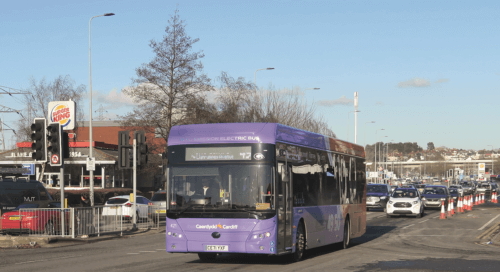
Whilst the number of council-owned bus companies slowly reduces, a visit by Martin Curtis to council-owned Cardiff Bus found the business to be thriving
In addition to motor buses, Cardiff Corporation was once a major trolleybus operator, with electric power supplied to vehicles from overhead wires. The route network covered the city, and trolleybus termini consisted of turning circles to avoid a reversing manoeuvre, many of which remain in place.
The current route pattern has since evolved with extensions and revisions, but continues to offer extensive coverage of the whole city. Thirty-five basic routes are provided, with many having variations within these; daytime frequencies range between every five minutes, to just six departures on Mondays to Fridays only.
Bws Caerdydd/Cardiff Bus celebrated its 120th anniversary last year. It remains by far the most prominent operator in the Welsh capital, with its fleet of well over 180 vehicles which service a daily peak vehicle requirement of around 150. The average age profile of the fleet is gradually reducing with a number of older vehicles awaiting disposal. Most buses are equipped with on-board CCTV and WiFi.
[…]By subscribing you will benefit from:
- Operator & Supplier Profiles
- Face-to-Face Interviews
- Lastest News
- Test Drives and Reviews
- Legal Updates
- Route Focus
- Industry Insider Opinions
- Passenger Perspective
- Vehicle Launches
- and much more!


